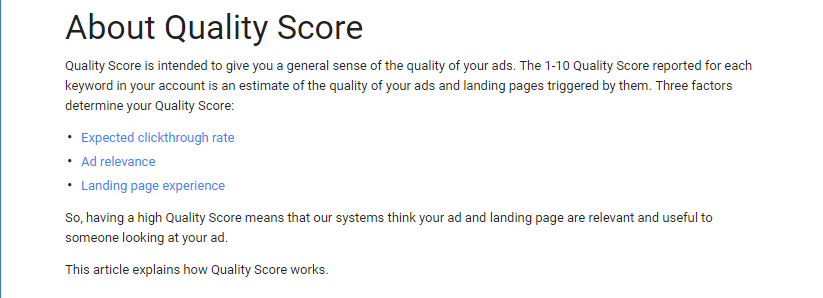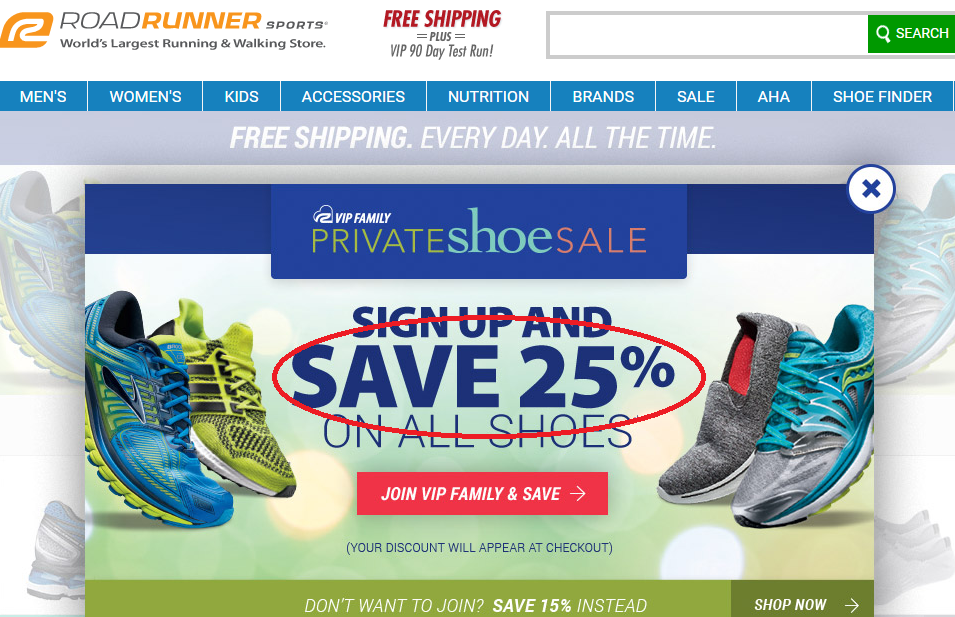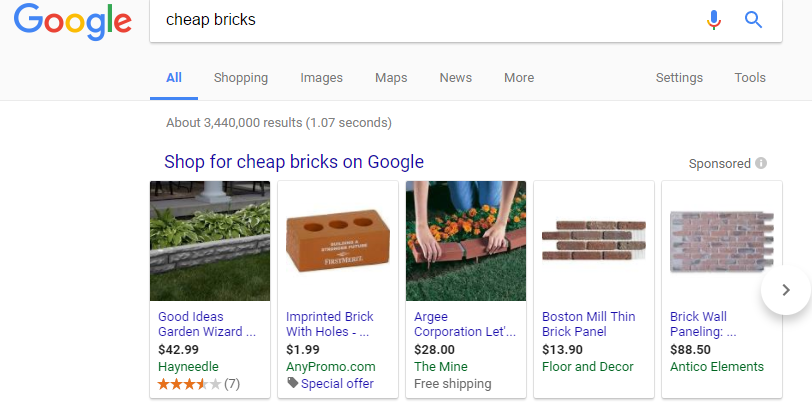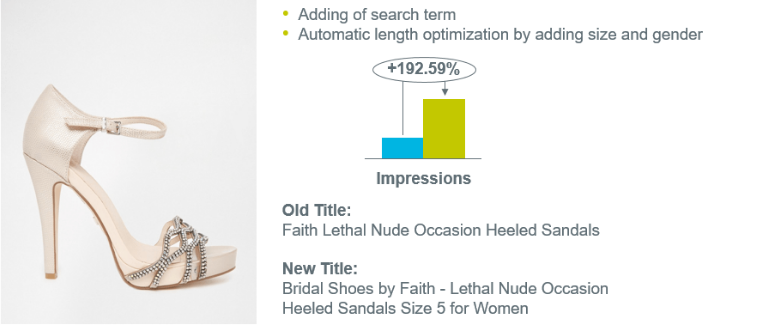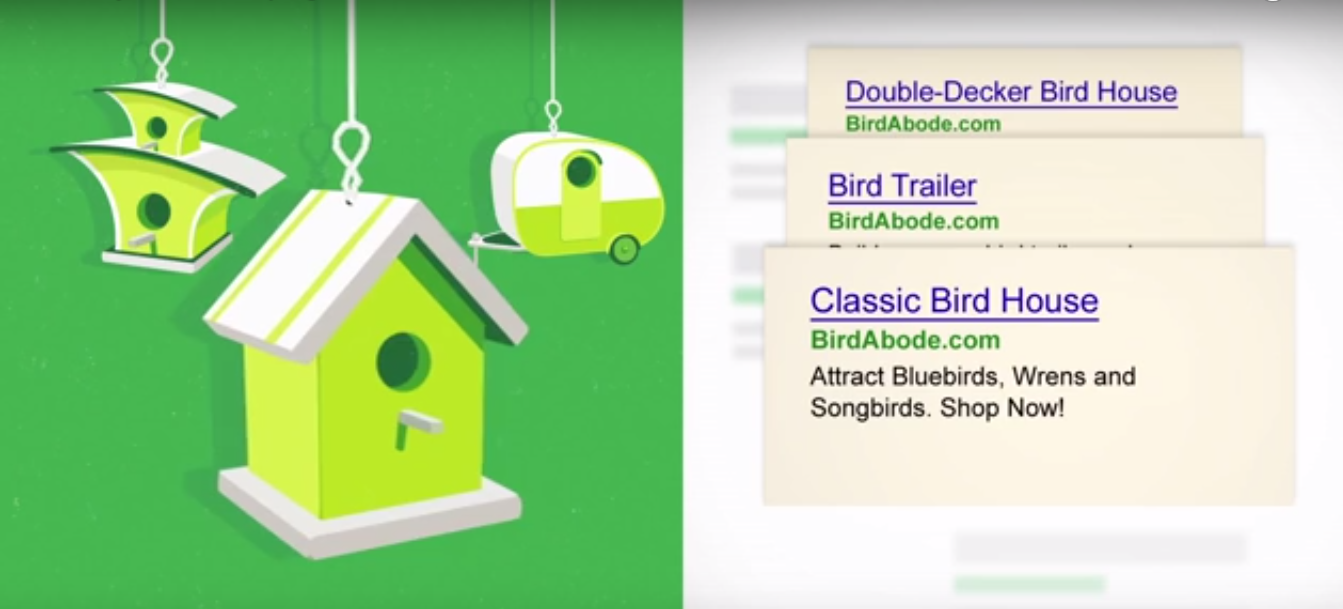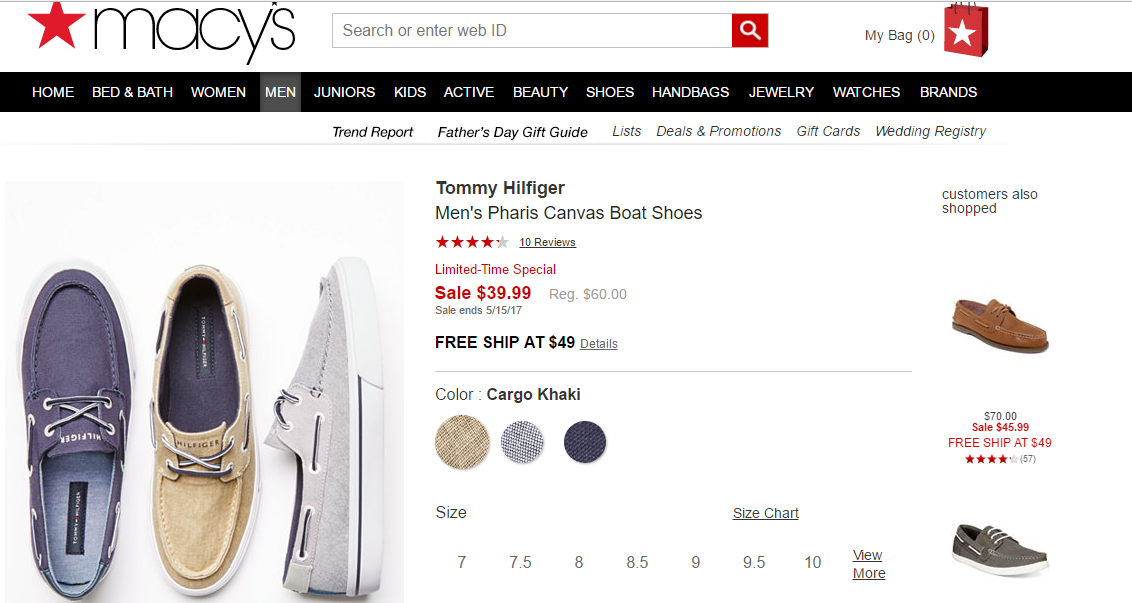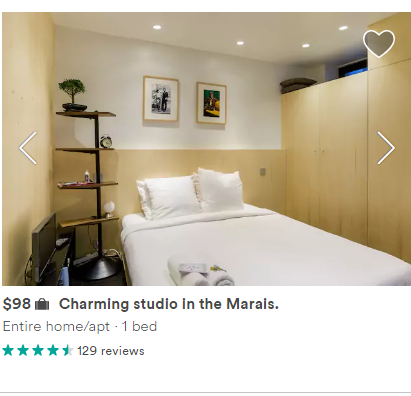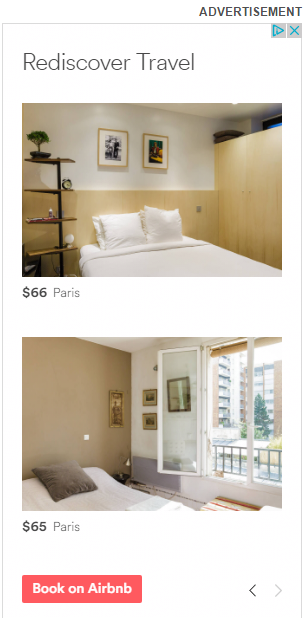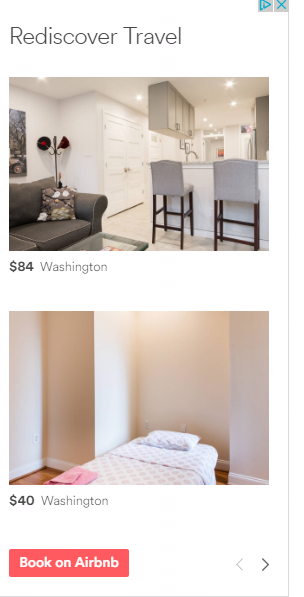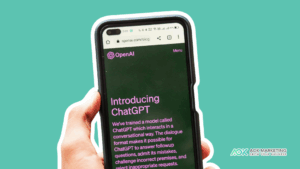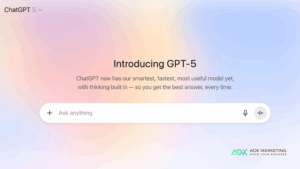(9 minute read)
As of today, more than 1 MILLION businesses are using Google AdWords.
But let’s be fully honest – how many of those businesses are actually using AdWords to its full potential?

Unfortunately, your average business is probably doing one of the following on their AdWords campaigns:
- 1. Wasting mass quantities of cash on ineffective ads
- 2. Breaking even
- 3. Earning what the average business makes of $2 in revenue for every $1 spent on Google AdWords advertising
- 4. Getting some return on their investment…but likely not even realizing why
[bctt tweet=”The average business makes $2 in revenue for every $1 spent on Google AdWords”]
And as an ecommerce company, you could be missing out on a lot of potential sales if you’re not at the top of your AdWords game. There are a total of 12 million ecommerce stores online today….which means you have some stiff competition.
But luckily, AdWords for ecommerce can have a HUGE ROI like in this image:

Or like this Google case study with 800% ROI.
But of course, you’ll never see ROI percentages like this if you aren’t doing your AdWords campaigns just right.
So that’s why today, our digital marketing experts want to let you in on some of the AdWords tips that they actually use to drive conversions and sales each and every day.
And best of all, we’ve got tips in here to capture potential sales from all stages of the buying cycle – from brand new customers, to warm prospects, to repeat buyers.
Alright, let’s dive right in!
Ecommerce AdWords Tips for Drawing in New Customers
1. Optimize Your Search Ads for Max Impressions
Why is this important?
Let’s say you’ve put in the hard work to get your campaigns up and running. But what if people aren’t actually seeing your ads?
Getting Google to decide to show your ads (and thus maximize your number of impressions) are determined by two things:
- 1. *Your bid.
- 2. *The quality of your ad.
What many people don’t realize is that you don’t necessarily have to have a high bid if you want to make sure people see your stuff. Instead, you can focus on the quality of your ad, instead.
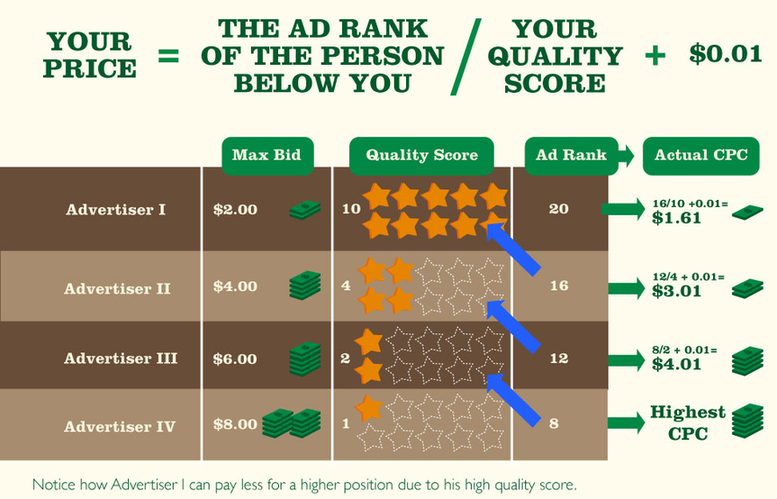
So, what can I do?
How can you make sure your ad is considered “quality” in Google’s eyes? Well, there’s a few ways you can do this, but I’ll sum it up in one quick phrase: focus on relevancy.
The first thing you can do is make sure your chosen keywords are highly relevant to the audience you want (explore with Google’s Keyword Planner for inspiration)…and it’ll be even better if you can include those actual keywords in your ad copy.
The second way you can focus on relevancy is by making sure you have a great landing page that is highly relevant to what you promise in your word.
As an example, if I see this ad for 25% of running shoes and I click on it…
…I’m brought to a highly relevant landing page with an offer that matches exactly what I saw on the ad.
2. Upgrade Your Shopping Ads for Peak Exposure
Why is this important?
To start, here’s what a Google shopping ad looks like:
The best thing about Google Shopping ads is that they bring you super qualified traffic. You see, the customers customers who stumble upon your ads will be ones you have typed in very specific search terms….meaning they know what they want and are ready to buy.
Shopping ads also let you highlight your products with:
- – Pictures
- – Prices
- – Special Offers (like free shipping)
- – Ratings
This helps give potential customers a lot of the info they need to buy before they even click your ad.
[bctt tweet=”Give potential customers the info they need to buy before they click your ad.”]
Plus, Google shopping ads show up at the very top of the search page, above regular text ads and organic results. This helps you get extra exposure as shopping ads are the first thing to draw a prospect’s eyes.
So, what can I do?
Since you don’t have any additional text in a shopping ad, you have to focus on nailing your title.
One way to do this is by using specific keyword search terms at the beginning of your title. The key here is to make sure they are at the beginning because otherwise they’ll get cut off in your ad.
Here’s a quick example of what it looks like and what happens when you add a search term to the beginning:
If your original title is short, you can also consider adding in the size and gender of your listed item alongside the search term. Here’s what would look like:
Beyond optimizing your titles, you can also apply tips #3, #4, and #5 down below to your shopping ads….they don’t only work for text-based Google ads!
3. Slash Wasted Ad Expenses by Nailing Your Negative Keywords
Why is this important?
Although impressions are obviously a major cornerstone of a successful Google AdWords campaign, there is one thing about impressions that you have to watch out for.
You see, too many businesses operate under the false assumption that the more people that see their ads….the better! Surely more impressions always equals out to more sales, right?
Well, it’s a little more complicated than that.
You could be getting thousands of impressions and clicks each day, but what if these are from the wrong type of leads? What if you’re wasting your money paying for the clicks of prospects who wouldn’t buy your product anyway?
Here’s what Google has to say about negative keywords:
In this example above, if the optometrist doesn’t select “wine glasses” as a negative keyword, someone searching for “wine glasses” could, in fact, end up clicking on the optometrist’s ad due to the shared keyword of “glasses.” In other words, the optometrist will end up paying for this click that’ll almost definitely not end up as a sale.
So, what can I do?
You can set up negative keywords for free directly through AdWords. You just need to Identify keywords that may be similar to your product, but not something that would actually be found on your website. For example, if you sell sports gear for just men on your website, you’d probably want to input “women” as a negative search keyword.
4. Build Separate Ads for Each Product
Why is this important?
Pretend you’re an ecommerce site that specializes in jewelry. The ads you currently have up are ones that promote your jewelry as a whole, without focusing in on specific products.
Now, let’s say I’m a potential customer who goes to Google and searches for “yellow earrings.”
See the problem here? By not creating ads for individual products that potential customers might search for, you could be missing out on tons of potential sales either by not being seen at all (since Google might not deem your ad to be relevant to the particular search term) or skipped over (if the prospect instead clicks on an ad that more closely matches exactly what he searched for).
Here’s an example of what those individual product ads could look for an ecommerce bird house shop:
And don’t forget – customers searching for super-specific products are not the type of customers you want to miss out on! Since these customers already know what they want and are actively looking for it, they are quite far along the buying cycle….in other words, it’s only a matter of time until they make that final purchase!
So, what can I do?
First of all, no need to panic! You don’t actually have to write up each individual ad yourself (which would be a nightmare for those who have thousands of products).
You can set up an inventory-aware campaign through Google DoubleClick or AdWords Robot. Then, all your keywords, ad groups, and adverts will be automatically created based on data in your Google Merchant Center.
5. Test and Experiment with Different Ad Extensions
Why is this important?
Ad extensions are add-ons that let Google pull extra snippets of info about your business to include in your ads.
They are great because they help you:
- *stand out from the competition
- *let you give prospects extra info about your business without taking away from your word limit
- *boost your CTR an average of 10-15%
*improve your quality score (and remember, the quality score is the key to max impressions)
[bctt tweet=”Improve your AdWords quality score with extensions.”]
Oh. And did I mention they are free and Google will even auto-optimize the best combinations for you?
So, what can I do?
There’s a ton of different extensions you can test out. Here’s just a sampling of what your future ads could look like:
Decide which ones are most applicable to your business and the type of clientele you need (for example, a location ad extension probably wouldn’t be a good fit if your business is completely conducted online) and test them out to see what gets you the most ROI.
Here’s how Google recommends you get started:
6. Show Off Your Best Sellers, Recommended Products, or Popular Products
Why is this important?
According to persuasion expert Robert Cialdini, author of Influence: The Psycology of Persuasion, there are 6 key principles of getting people to say “yes” to what you are offering.
[image source]
For this tip, we’re talking about how you can use principle #3 – social proof – to your advantage.
Essentially, the aim of highlighting a product as a best seller, recommended product, or popular product is to build up this ‘social proof’ – making shoppers more confident in their purchases because “well, if everyone else is getting it….it must be good!”
Put another way:
Whether or not the products that you highlight are actually best sellers or just stock that you need to sell….well, that’s another story.
Ecommerce AdWords Tips for Pulling in Warm Prospects
7. Retarget Like the Pros
Why is this important?
Of course, no business owner would say ‘no’ to a new customer or two…but transitioning from someone who clicks your ad for the first time to someone who actually buys from you can be a long process.
So, what’s the alternative? Well, what about focusing on potential customers who have already shown interest in your website and products?
And a retargeted ad campaign lets you do just this – by working off the cookies dropped into your prospect’s browser, it makes sure people who have already visited your website end up seeing your ads again and again.
Here’s what retargeting looks like.
I go to Macy’s website to search for shoes:
Just a few minutes after I finish my shoe search and end up on a news website, this ad appears at the top of my page:
As you can see, this is a great way of reminding prospects again and again of the products they were interested in and maximizing their exposure to your brand.
Oh, and retargeting is super effective – it’s been shown to convert up to 3X better than regular ads! So, if it’s not something you’re already doing…
[bctt tweet=”Retargeting has been shown to convert up to 3X better than regular ads!”]
So, what can I do?
To start, Google recommends all businesses new to AdWords begin by retargeting customers who have been on their homepage. But you can also retarget those who have been on a specific landing page, special offer page, best-selling product page, etc.
Based on the Macy’s example above, it looks like they created their campaign to retarget people who had looked at their men’s shoes, specifically.
Ecommerce AdWords Tips for Getting Repeat Customer Sales
8. Upsell Like a True Expert
Why is this important?
What’s even better than a potential customer who has shown interest in your website and products?
Well, one that’s already gone through and purchased something from you, of course!.
Aiming to get sales from repeat customers should be at the core of any ecommerce business.
Here are just a few stats to make sure you really know how vital your repeat customers are for your business:
*The probability of selling to a new customer is 5-20% while it is 60-70% for an existing customer
*In the U.S., 40% of ecommerce revenue comes from returning customers
*In the United States, it takes 5 shoppers to equal the revenue of 1 repeat purchaser
Are you convinced?
If so, then upselling is a great way to try to retarget your existing customers for future sales.
Essentially, all upselling is presenting your customer with a product that’s a step-up from what they’ve already purchased from you.
Here’s a bit what the upselling would look like for someone who purchased a watch:
So, what can I do?
Unfortunately, setting up an upselling campaign in AdWords is fairly complicated and requires some technical knowledge. This is because you’ll have to track the amount of purchases with individual ‘Thank You’ page URL for each and every product.
For this tip (and the next few), it might be time to hit up an expert for help (or prepare yourself to spend tens of hours watching Youtube tutorials).
Just as a final tip: if you do go to town on doing these yourself, just make sure you don’t try to retarget your customers less than a week after they’ve purchased….otherwise, you might just come off as a little too stalker-ish.
9. Downsell Like a Madman
Why is this important?
Well, downselling is important for the exact same reasons that upselling is! Basically, anytime you can get a repeat customer to buy something (even if it is smaller than the initial purchase), you’re golden.
Here’s what downselling looked like for Airbnb.
First, I went to Airbnb and searched for places to stay in Paris, France.
This was the one place I clicked on (take note of the price here):
Shortly after, I found this Airbnb ad on another website downselling other places to stay in Paris for a lower price than my original choice:
Though this is for a travel website, you can definitely use this exact same technique for an ecommerce business. For example, if someone buys a watch like in the upselling example, you can try to downsell them a watch maintenance kit.
So, what can I do?
Pair up certain products that you think would make good downsells…and follow the same process as with the upsells.
Bonus: Cross-Sell Like There’s No Tomorrow
Why is this important?
Here we have yet another retargeting technique for your already-converted users. (See? We told you repeat customers were important.)
The idea of cross-selling is pretty simple: it’s just suggesting products related the product you know your customer liked enough to buy.
For example, if someone buys that watch listed above, I could try to cross-sell them a running watch of the same caliber and quality.
Airbnb employs this travel cross-selling, as well. Though I searched for Paris on their website, later on I encountered ads for Washington, a location that I’ve actually booked Airbnb for in the past.
So, what can I do?
Follow the same process outlined for upselling and downselling above.
P.S.: Keep in mind that it’s also super effective to use upsell, downsell, and cross-sell techniques within your cart during checkout…but we’ll save that for another article 🙂
[bctt tweet=”9 In-House AdWords Tips Experts Use For Explosive Ecommerce Growth” username=”AOKMarketing”]
Whew! That was a lot of info. Let’s simplify this down into 4 key takeaways you can use when creating your own ecommerce AdWords campaign:
- 1. Prioritize relevancy, negative keywords, and individual product ads to get new customers to your website.
- 2. Focus on retargeting to get people who’ve browsed your site to come back and make a purchase.
- 3. Consider remarketing in all its forms (upselling, cross-selling, downselling) to get the most out of your current customers
- 4. Put all 3 of the above takeaways together for a well-rounded approach to Google AdWords that’ll help you capture prospects from all stages of the buyer’s journey!
About The Author
Dave Burnett
I help people make more money online.
Over the years I’ve had lots of fun working with thousands of brands and helping them distribute millions of promotional products and implement multinational rewards and incentive programs.
Now I’m helping great marketers turn their products and services into sustainable online businesses.
How can I help you?
